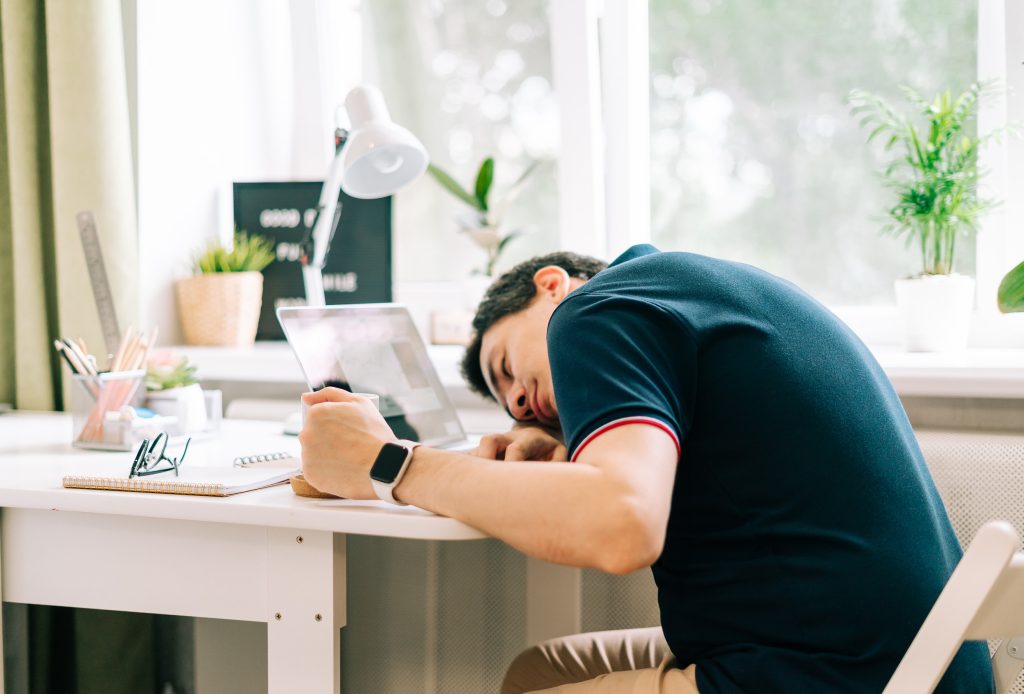
www.optimistdaily.com
Why your lunch is making you sleepy (and how to stop the slump)
BY THE OPTIMIST DAILY EDITORIAL TEAM
We’ve all been there: One moment, you’re riding the lunch-hour high, and the next you’re half-asleep at your desk, contemplating a nap under it. Welcome to the dreaded food coma, also known in science-speak as postprandial somnolence.
If this mid-afternoon meltdown is tanking your productivity, mood, and ability to keep up with life, you’re far from alone. “Afternoon drowsiness can disrupt a person’s daily routine by reducing productivity, alertness, and concentration, as well as performance, mood, and quality of life,” says Meredith Liss, RD, CDN, a clinical dietitian at NewYork-Presbyterian/Weill Cornell Medical Center.
So why does a hearty meal sometimes feel like a sleep spell? And more importantly, how do we break it?
Why you feel tired after eating
It turns out, your plate might be the culprit. According to gastroenterologist Lisa Ganjhu, DO, from NYU Langone Health, carb-heavy meals, especially the refined kind like white bread, pizza, and sweets, cause a blood sugar spike followed by a dramatic dip. That crash? It’s your brain on sugar withdrawal.
Meals high in tryptophan (yes, turkey’s sleep-inducing rep is legit) or big enough to stress your digestive system can also lead to drowsiness. “The more we eat, the more is required of our digestive system,” Liss explains. That digestive overload diverts energy from the rest of your body, leaving you zonked.
Even your meal schedule matters. Eating erratically or skipping meals can mess with your blood sugar and lead to energy dips.
How to stop the slump: six smart fixes
1. Build better-balanced meals
Skip the carb avalanche. Instead, aim for balanced meals that combine protein, healthy fats, and fiber. This slows digestion and keeps blood sugar steady. Liss recommends whole grains like oats, barley, or brown rice; plus fruits, vegetables, and smart protein choices.
Need ideas? Try:
Baked salmon, roasted sweet potato, and steamed spinach sautéed with olive oil
Lentils with brown rice, air-fried broccoli, and avocado
Greek yogurt with nuts and berries
Apple slices with almond butter
And maybe ease up on tryptophan-rich ingredients if you notice they knock you out.
2. Eat on a schedule
Skipping meals or eating whenever the mood strikes sets you up for crashes. Regular meals = stable energy. Think of it as blood sugar jazz, not a rock concert.
3. Downsize your portions (just not too much)
Yes, big meals can trigger a nap attack. But going too light can backfire, too. “Make sure that you’re not overeating,” Dr. Ganjhu says, but don’t undereat either. Stay satisfied, not stuffed.
4. Hydrate like it’s your job
Dehydration is sneaky. It can look like hunger or feel like exhaustion. Sip throughout the day to stay energized and keep your body running smoothly.
5. Move a little
Stretch. Stroll. Channel your inner grandparent and take a “fart walk.” Research suggests light activity right after eating can help digestion and steady your blood sugar.
6. Skip the sun-and-sauv blanc combo
Heat and alcohol both sap energy. Alcohol is a depressant (literally), and a blazing hot afternoon can make your body work overtime to cool down. If you’re already prone to post-meal sleepiness, maybe save the cocktail and lawn chair for later.
Could it be something more?
Sometimes post-meal sleepiness isn’t just about food. “Excessive daytime sleepiness could be a sign of an underlying health condition,” Liss notes. These can range from diabetes, thyroid issues, or sleep disorders. If you’ve tried all the tips above and still crash hard every time you eat, talk to your doctor.
Your lunch shouldn’t be your downfall. With a few strategic tweaks, you can stay energized and keep the post-meal coma where it belongs: on Thanksgiving.The post Why your lunch is making you sleepy (and how to stop the slump) first appeared on The Optimist Daily: Making Solutions the News.










